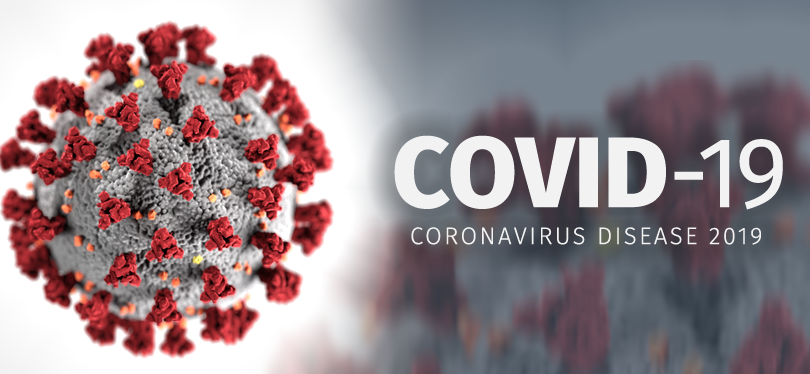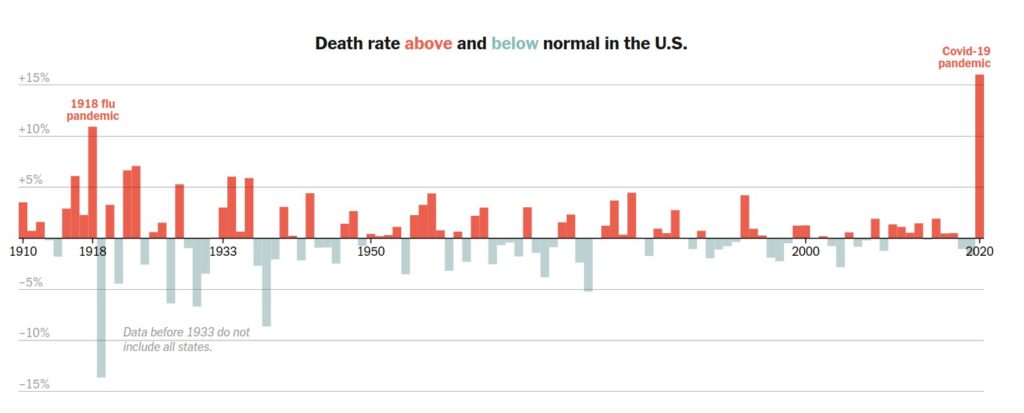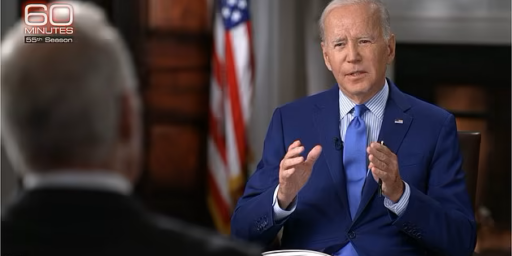Covid-19 and Excess Death in 2020
More dramatic stats from a difficult year.

Early in the pandemic, it was observed that one way to see the impact of the pandemic outside the officially reported numbers was the empirical fact that the US was simply seeing more deaths overall than it should. This was a frequent theme in posts (for example, Back to the Question of Excess Death and Yet Again: The Numbers Show Excess Deaths). Now a comprehensive study confirms that yes, 2020 had a dramatic increase of deaths over expectations.
Via the NYT (How Covid Upended a Century of Patterns in U.S. Deaths) comes this very dramatic graph:

This really puts into perspective what we have experienced over the last year. The piece notes that some of the excess deaths are attributable to causes beyond Covid-19,
Aside from fatalities directly attributed to Covid-19, some excess deaths last year were most likely undercounts of the virus or misdiagnoses, or indirectly related to the pandemic otherwise. Preliminary federal data show that overdose deaths have also surged during the pandemic.
But it also notes that last year, Covid-19 was the third leading cause of death in the United States after heart disease and cancer.
More charts and stats at the link.
But, yet again, we see that Covid-19 was hardly just the sniffles or a little flu.






The really depressing statistic is that opioid deaths seem to have gone up meaning that particular crisis which pre-dates Covid continue to rampage across states that were probably the very ones that did not take the Covid Pandemic as seriously as they should have so it is a double whammy for the communities hard hit by Covid and the Opioid crisis.
I could have sworn that was one of the few things Trump wanted to try and mend, the communities that were being torn apart by big pharma, and even if he did not do much he made sure that the problem was not ignored. It would seem we should shine a spotlight on the Opioid crisis and not just fixate on Covid. Or maybe we are already doing that and I am just not noticing or reading the right articles on-line.
@inhumans99:
He put his best manchild on it, along with Mideast peace, and PPE procurement.
@inhumans99: I had some hope he would shine light on the problem and maybe throw some money at it.
Alas, he was even less interested in actually governing than I thought back in 2016 (and my expectations were insanely low).
For me the most eye opening statistic is that in one year, COVID19 killed more Americans than the entirety of WW2.
And just another reminder: there were excess deaths despite the fact that relatively few died of the flu or other non-Covid respiratory contagions.
@inhumans99:
There was some hope that the administration’s loud pronouncements on the opioid epidemic would obligate some action, but alas it’s been mostly a disappointment. Mostly marketing to the perceived base.
That said, the NIH did indeed pony up a lot of money for the HEAL initiative, which continues to this day. In fact, the 2nd HEAL investigator meeting is scheduled for next month to showcase the work being done.
COVID certainly slowed down a lot of the scientific momentum, and damn near sucked all the oxygen out of the public room (terrible analogy acknowledged). But I’m hopeful that the opioid issue will return to prominence in the public conversation once COVID is less of an urgent threat. And also that some of the HEAL-funded science will be ready for primetime when that happens.
What’s interesting is that suicide deaths were actually down in 2020 (although suicidal ideation was up). So the surge in overdose deaths is probably not “despair”. It probably has more to do with clinics and other sources of help getting shut down. Which suggests, once again, that treatment rather than punishment is the way to deal with our nation’s drug problem. Or at least mitigate it somewhat.
Because people avoided other types of healthcare during 2020 in order to dodge COVID, we will see a continuation of downstream effects for years to come.
During any given year millions of people are diagnosed and treated for diabetes, heart disease, cancer, etc. In 2020 many of those people did not seek care, or sought only minimal symptom relief.
Also, millions of elective procedures were delayed or cancelled, which also affects public health.
My guess is that we’ll continue to see excess deaths on the rise in 2021, even though many of the oldest and weakest folks that we might expect to pass in 2021/2022 were lost in 2020.
Oh for crying out loud. Diabetes deaths and heart disease deaths did not jump double digit percentages last year. Trumper areas tend to have coroners, not medical examiners. Coroners are elected or appointed and many don’t even have medical degrees. In other words, it’s a political sop. They classified COVID-19 deaths as being due to some underlying condition.
would like to see more information on how the data is compiled or maybe a better presentation than that simple bar graph. As it can be slightly misleading in my opinion. For instance, what is “normal death rate” defined as as? It would appear to me that it changes decade to decade. With advances in chemotherapy and cardiac stenting, I would imagine that the “normal death rate” would be quite different in 1920 than 2020.
If we look at the 1918 flu pandemic, it killed 675,000 people in the US (6.5% of the population) according to the CDC. The current pandemic is 585,000 (1.7% of the population) and counting. So even with a smaller population and greater death toll, the 1918 flu pandemic shows about 11% increase in “normal death rate” compared to 16% increase in “normal death rate” of Covid-19.
So i guess what i find interesting about that graph is how far along we’ve come in erradicating/decreasing diseases such as heart disease, cancer, turbculosis, polio, etc. In that a far deadlier pathogen in 1918 didn’t move the “normal death rate” needle as much as the COVID-19 pandemic.
@Jack Kelly:
Well, you could have read the NYT article.
@Hal_10000:
Yeah, the suicide numbers have surprised a lot of people. The “pulling together” effect may be one explanation. Another, less positive, one may be that COVID killed a significant number of people who would otherwise have committed suicide. Many other explanations are no doubt also at play.
Regardless, yes to this:
@Tony W:
I’m not so sure. The overall link between healthcare and health is not as strong or clear as one might suspect. It’s also a very difficult relationship to analyze, prone to all kinds of intentional and unintentional statistical shenanigans. Will be interesting to see how it shakes out. [note, I’m writing as a detached scientist here]
@Franklin: And, I would suspect that accident deaths (such as auto accidents) are down due to more people staying home.
@Jack Kelly: There is quite a bit more at the link. I did not intend this post to fully replicate that info.
There are several different metrics that show the issue in that piece.
i would like to see a breakdown by states, considering there are states suspected of juking their covid stats e. g. fl